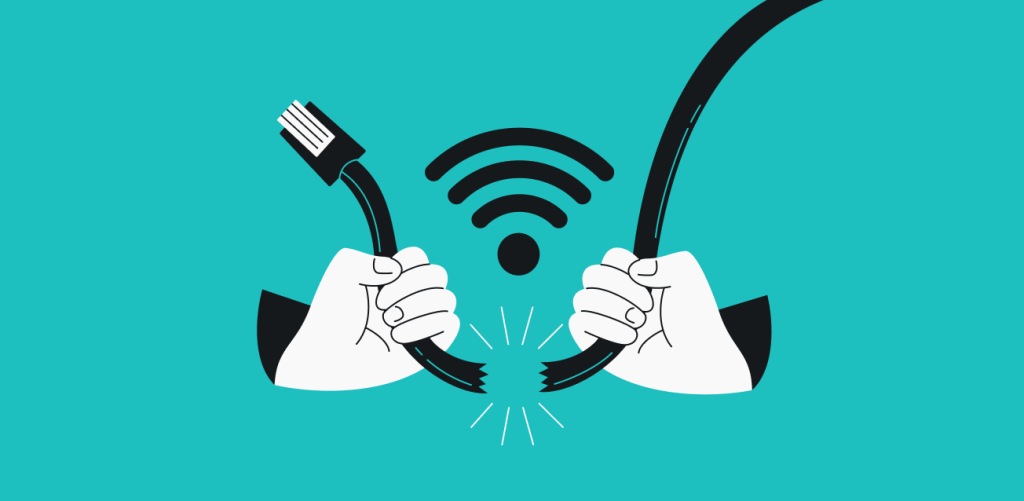
Today, 5.11 billion people (or 65.6% of the global population) use the internet. However, lower-income countries still work the most for bad-quality internet.
There is an ever-growing disproportion in internet accessibility. This imbalance goes beyond just the internet to include digital exports, computing power, cybersecurity, and similar. But how big is the divide, and how will it expand in time?
Table of contents
Introducing the Digital Quality of Life Index (DQL)
Surfshark’s 2022 DQL Index reveals key insights into digital wellbeing across 117 countries (or 92% of the global population). Each country ranks according to five pillars: internet quality, internet affordability, e-infrastructure, e-government, and e-security.
Having analyzed the Digital Quality of Life index over the last four years, Surfshark found that digital opportunities have proven to be more critical than ever. The COVID-19 pandemic stresses how important it is for countries to ensure remote operational capacity to drive their economies forward.
Moreover, the study shows that internet accessibility varies greatly in quality and affordability depending on where we live, creating deep inequalities between lower and higher-income countries.
The ongoing internet divide: growing and declining regions
When it comes to internet freedom, some regions develop quicker than others. Africa still faces the most significant internet divide of all the continents in this study, as it was the only continent where the internet has failed to become more affordable since last year.
Of all the pillars, internet affordability shows the highest inequality. As of 2022, the internet in Africa is 83% less affordable than in Oceania, the region with the most affordable internet. In fact, the study’s data shows that the gap between these regions has widened by more than 20 percentage points.
The heatmap below shows that the world’s poorest countries are still paying the most for bad-quality internet; a trend that is primed to continue for the foreseeable future.
Lower-income countries work 3x more for 3x slower internet
People from lower-income countries are at an instant disadvantage when it comes to internet accessibility. Both mobile and broadband internet are 3 times slower than in higher-income countries but are 3 times less affordable:
- Mobile internet: People from lower-income countries work approximately 11 minutes more than higher-income countries to afford a single 1GB mobile internet plan that is also 49 Mbps slower. The average mobile internet speed in lower-income countries is 26 Mbps. You likely wouldn’t have any trouble streaming a movie, but you would struggle to have a video conferencing call (which requires at least 50 Mbps speed).
- Broadband internet: lower-income countries work 8 hours more than higher-income countries to afford a fixed broadband plan that is 83 Mbps slower on average. Unfortunately, fixed broadband internet in lower-income countries is just slightly faster than mobile (34 Mbps), which is still not enough for a smooth video call.
- The lowest-income countries experience the sharpest internet divide: in Mali and Ethiopia, people work 14 times more than the highest-income countries for mobile internet that is 68 mbps slower. Broadband internet in these lowest-income countries is just 19mbps on average (129 mbps slower than the highest-income countries), but it’s 8 times less affordable.
In the analysis above, we consider lower-income countries to be combined “low income” and “lower middle income”, according to Worldbank (2021) data. Higher-income countries are considered to be those labeled “upper middle income” and “high income”, thus creating these two subcategories.
Addressing the inequality in e-infrastructure
High-speed internet is a massive investment for any county, and the regions with the best e-infrastructure will continue to climb in global market value.
- Of the ten highest-ranking countries in e-infrastructure, 96% of the population uses the internet. In the ten lowest-ranking countries, only 29% do.
- 8.2% of the global population lives in a country with 50% internet penetration or less, whereas in Europe, almost 90% of the population has access to the internet. The lowest internet penetration is found in Africa.
- A country’s GDP is not critical in developing e-infrastructure. More than 20% of the examined countries in the DQL Index have a lower-than-average GDP but higher-than-average e-infrastructure.
Why is affordable internet vital to economic growth?
In the regions where internet quality and affordability are the highest, GDP per capita also seems to show the highest growth. Improved internet quality and affordability can help countries benefit by exporting Information and Communications Technology (ICT).
Examples include software applications, operating systems, web-based information/learning, cloud services, voice over IP (VoIP), or email service exports.
- European countries make up more than 50% of global ICT exports, ranking second to Oceania in terms of internet quality and affordability.
- Asia makes up a third of all global exports, which primarily come from China and India. However, Asia’s ICT exports per capita are ten times lower than Europe’s.
- Africa exports ICT services the least, with 27 countries exporting more ICT services than Africa combined. However, both the Philippines and India have high ICT export rates, despite having a lower digital quality of life rating.
For the full infographic, storing all the graphs in this blog post, visit the link here.
DQL is a study conducted by Surfshark, a cybersecurity company. If you have questions, visit the interactive DQL page or contact us at media@surfshark.com.
Methodology
This internet divide study uses the Digital Quality of Life index 2022 and 2021 editions’ data. For the purposes of this article, internet inequality was analyzed across four categories: e-infrastructure, internet quality, affordability, and countries’ economic wellbeing. Scope: 110 countries are in both years’ analyses; thus, we can compare improvements across various pillars.
Note: The internet is considered to be of low/high quality if a country’s digital quality of life index (DQL) is lower/higher than the global average. The same can be said for internet affordability.
- Internet affordability determines how much time people have to work to afford a stable internet connection. The affordability of the internet connection directly impacts its accessibility. A less affordable internet affects digital well-being and vice versa.
- Internet quality measures how fast and stable the internet connectivity in a country is and how well it’s improving. The quality of internet connectivity greatly depends on its speed and stability. Slow and unstable connections inhibit daily use and diminish work efficiency, while fast and stable connections allow for better communication, high-quality content, and more.
- Electronic infrastructure determines how well-developed and inclusive a country’s existing electronic infrastructure is. High-functioning e-infrastructure enables people to use the internet daily for many purposes, such as studying, e-commerce, entertainment, banking, and similar, meaning a better digital experience.
- Economic wellbeing is measured by GDP per capita (monetary value of final goods and services produced in a country per person in a given year and is used to indicate wealth and prosperity) and exported ICT services (ICT services are an aggregation of computer and telecommunications services) that are directly linked to the internet availability.
Sources
Internet divide research material
Statistics Times. (2022). GDP Indicators 2020-2021
Internet World Stats. (2022). Internet Usage Statistics Dec 31, 2021
Worldmeter. (2022). World Population
UNCTAD. (2021). ICT services exports 2020
Worldbank. (2021). Income levels by country
